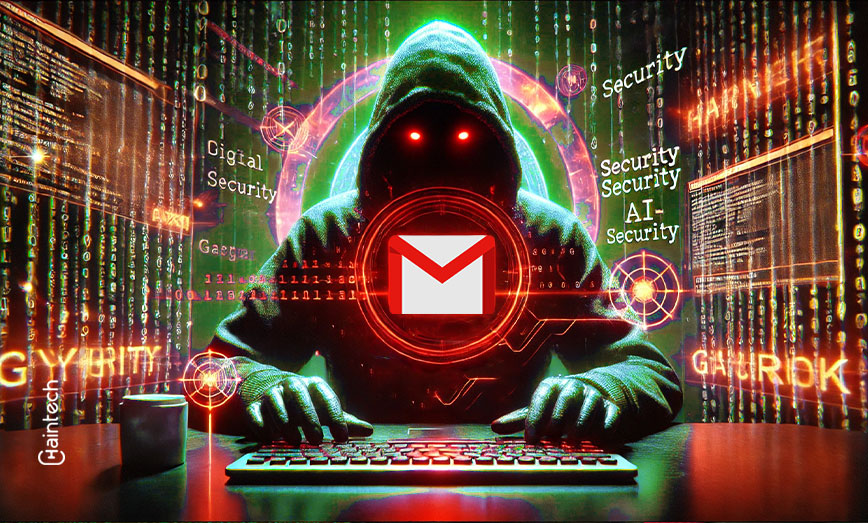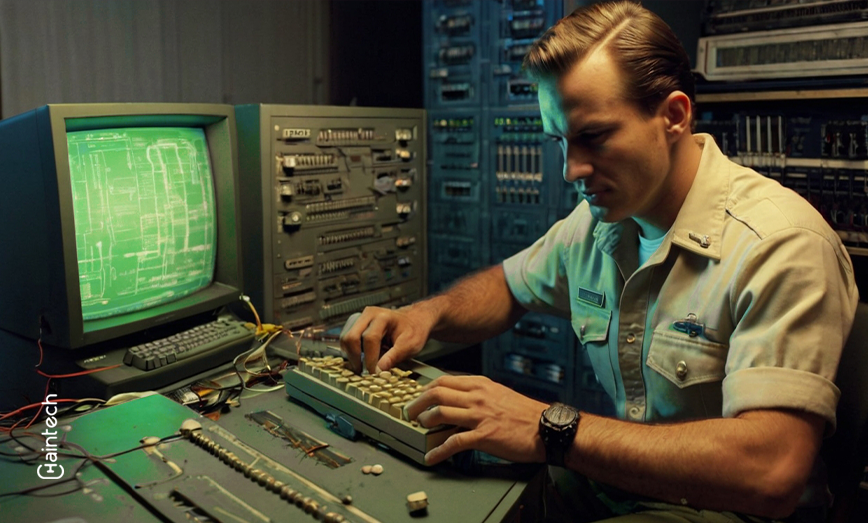1987 Hacker Breach: $1 Million Software Stolen from AT&T

Imagine being an 18-year-old with a passion for computers. Now, imagine using that passion to break into one of the largest telecommunications companies in the world. That’s exactly what Herbert Zinn did in 1987. At 18 years old, Zinn accessed AT&T’s computer systems, stealing $1 million of software. This wasn’t some small hack. It involved AT&T, government offices, and even NATO.
Back then, hacking wasn’t as widely understood as it is now. Zinn’s actions shocked both the tech industry and the government. His story became a warning about the growing dangers of computer hacking.
Want to know how an 18-year-old managed to do all this? Keep reading to dive deeper into one of the most famous hacks of the 1980s.
The Story of Herbert Zinn – A Young Hacker’s Journey
Herbert Zinn was quite fascinated by computers, but that fascination soon developed into something rather dangerous. At the tender age of 18, he already dropped out of school. However, the situation didn’t prevent him from acquiring knowledge. Indeed, Zinn would investigate how to gain unauthorized access to computers for hours on end. One of his prime targets? AT&T.
In cyberspace, Zinn introduced himself as Shadow Hawk. Under this pseudonym, he gained recognition in some tech circles for his hacking prowess. But Zinn did not only fix his crosshairs on AT&T while the hacking spree continued. Other targets were breached, including NATO and Robins Air Force Base. He also stole software with an estimated worth of $1 million, including some that weren’t even available for sale.
People began to ask themselves: How could someone this young beat the security of such big institutions? Zinn started leaking hacks via bulletin boards and networks such as Phreak Class-2600. Active participation on bulletin boards was a hallmark of his engagement, with hackers frequently sharing tips and tricks. He showed no hesitation in seeking waged work. Instructions for exploiting AT&T’s proxy were boldly posted on public bulletin boards in Texas. This recklessness almost reflected an eagerness to be apprehended.
How Did Zinn Pull Off the 1987 AT&T Hack?
So, how did Zinn hack into AT&T’s systems? Zinn exploited weak points in AT&T’s security system. He cracked passwords and gained access to sensitive files. One of the most valuable software he stole was an artificial intelligence program worth $1 million. This program hadn’t even hit the market yet.
But Zinn didn’t just stop stealing the software. He also shared details on how others could hack into AT&T’s systems. He posted this information on bulletin boards, where many tech enthusiasts gathered. This was one of the major mistakes that led to his capture. Zinn’s actions weren’t hidden but open for anyone to see. And that’s what caught the attention of AT&T’s security team.
Zinn’s boldness, combined with the lack of security at the time, made it easy for him to continue his hacking spree for months. He wasn’t just after AT&T’s data. He also targeted other systems, including the accounts payable department of The Washington Post and even a hospital in Indiana.
A Broad Reach: More Than Just AT&T
Zinn didn’t limit his attacks to just AT&T. His hacking spread far and wide. Zinn managed to break into several important systems, including the North Atlantic Treaty Organization (NATO) and Robins Air Force Base. Although the software he stole from these places was considered “low-level,” it was still alarming that someone so young could penetrate such sensitive systems.
During his hacking spree, Zinn targeted various locations. He accessed AT&T’s Bell Labs in Naperville, Illinois, and New Jersey. He also attempted to hack into a hospital in South Bend, Indiana, computers in Columbus, Ohio, and Pipe Creek, Texas. This raised serious concerns about the vulnerability of important institutions.
But why did Zinn target these places? His actions seemed to be driven by curiosity and a desire for notoriety. He was less interested in causing harm and focused on proving he could break into these systems. Nevertheless, his actions exposed the major weaknesses in both corporate and government security systems.
What Happened to Zinn?
When federal agents raided Zinn’s home in September 1987, they confiscated three computers and several pieces of stolen software. While Zinn didn’t damage the systems he hacked, the theft alone was enough to warrant prosecution. The government wanted to send a clear message to the hacking community: these actions would not go unpunished.
U.S. Attorney Anton Valukas clarified that Zinn’s case wasn’t just about the stolen software. It was about setting an example. Valukas said, “The only way to convince these people that this is not a game, not Pac-Man, is to prosecute them.” This marked the first prosecution in the Northern District of Illinois. It set a legal precedent for how hacking cases would be handled moving forward.
Here’s a table showing the key systems Zinn targeted:
| Institution | Location | System Infiltrated | Value of Stolen Data | Type of Data |
| AT&T | Bell Labs, Illinois | AI Program | $1 million | Proprietary Software |
| NATO | Burlington, NC | Maintenance System | Low Sensitivity | Operational Software |
| Air Force Base | Robins, GA | Supply System | Low Sensitivity | Military Data |
| The Washington Post | Washington, D.C. | Accounts Payable Department | N/A | Financial Data |
| Hospital | South Bend, IN | Patient Data | N/A | Medical Records |
Because Zinn committed most of these crimes as a juvenile, his punishment was less severe than what it might have been if he were an adult. He faced a possible prison sentence until his 21st birthday in August 1991. However, Zinn cooperated with federal investigators, which likely helped reduce his sentence.
The Role of Bulletin Boards in the Hacking World
Bulletin boards played a huge role in the 1980s hacking community, and Zinn’s case is a prime example of this. These bulletin boards weren’t like today’s social media platforms. They were niche spaces where tech enthusiasts—some of whom were hackers—gathered to exchange information. One of the most popular boards was Phreak Class-2600, where Zinn frequently posted his exploits.
Here are some ways bulletin boards fueled the hacking world:
- Open Communication: Hackers would freely share details on how to crack systems, often bragging about their achievements.
- Lack of Regulation: At the time, there were no strict rules or monitoring, so illegal activities often went unnoticed.
- Learning Platform: New hackers could quickly learn from more experienced ones, which helped the community grow.
- Exposing Vulnerabilities: Bulletin boards were often used to expose flaws in corporate and government systems.
These bulletin boards acted as a digital meeting place for hackers like Zinn, making it easier for them to share their knowledge and methods.
What Zinn’s Hack Taught the World About Cybersecurity
Zinn’s trick was not merely software theft or how effective was the security defense of that time. All the institutions, including AT&T, NATO and the government in particular realized that a lot more was to be done. It was also in Zinn’s case where the changes began as many such institutions began to take matters in cybersecurity more seriously.
Arguably, the most expensive and profitable type of software Zinn hacked was artificial intelligence software worth one million dollars. The program was still confined and would not be available to the public, thus making its theft even more disturbing than all that was described. But more importantly, beyond the monetary value, Zinn’s hack revealed the relative ease at which someone with advanced information could penetrate a complicated system.
Although Zinn did not manage to achieve a single stolen software, Zinn’s exploits raised fears of things worse than what she had done. Would people like Zinn be able to gain access to topics that are classified as military or sensitive information one day? This case was such an eye-opener for multinational companies as well as the government.
One Hack, A Lifetime Of Lessons
Herbert Zinn’s 1987 hack was a significant event in the early days of cybersecurity. His actions exposed the vulnerabilities in major systems like AT&T, NATO, and even the Defense Department. Zinn may have been just 18 then, but his hacking spree had long-lasting effects on how cybersecurity was viewed and managed.
Today, hacking attempts are far more sophisticated, but Zinn’s story reminds us that even simple exploits can have major consequences. As technology continues to evolve, so must our defenses against hackers like Zinn.









